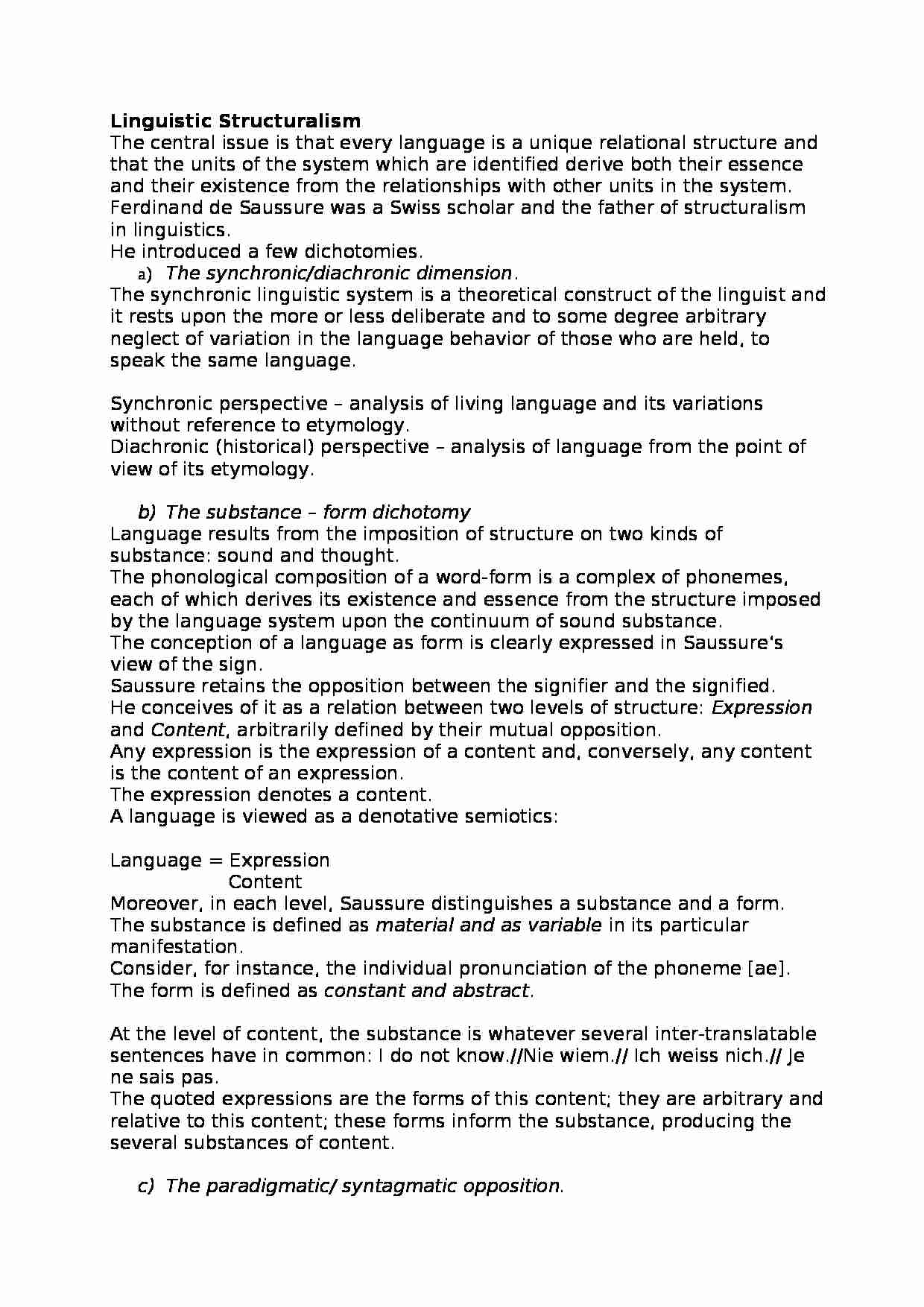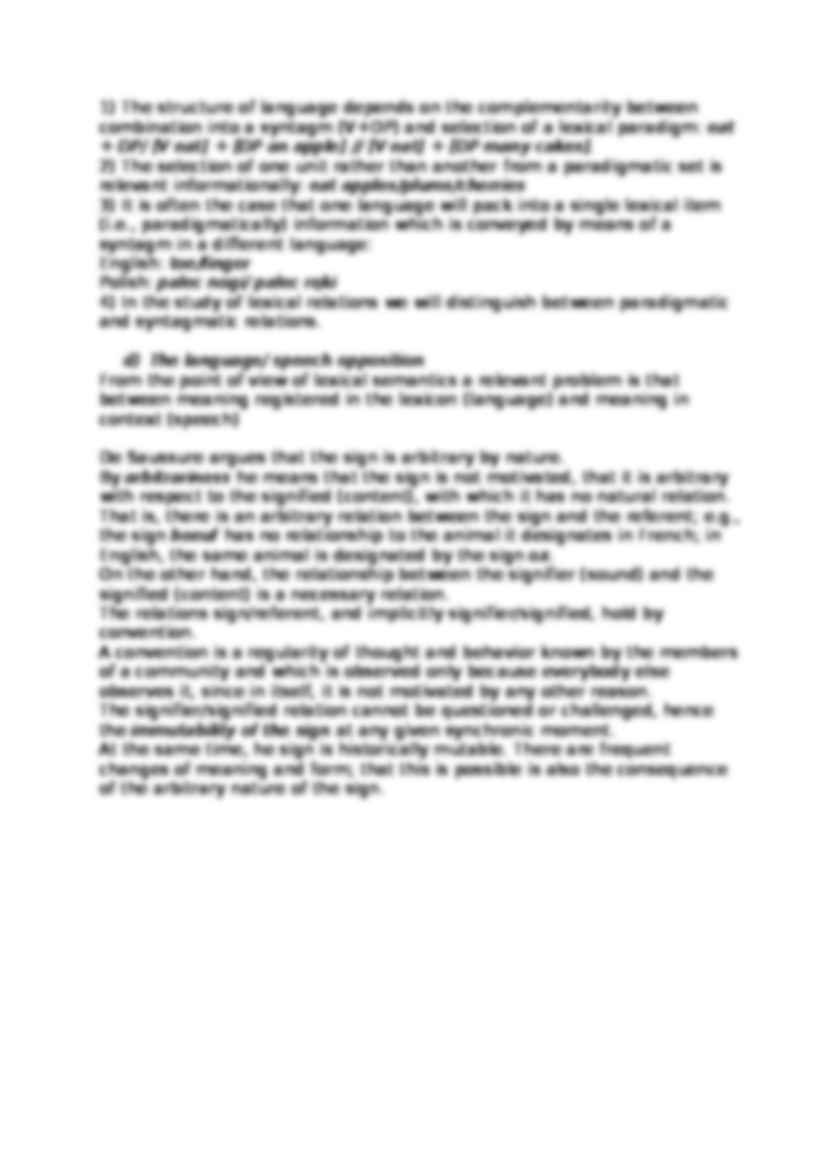To tylko jedna z 2 stron tej notatki. Zaloguj się aby zobaczyć ten dokument.
Zobacz
całą notatkę


Linguistic Structuralism
The central issue is that every language is a unique relational structure and that the units of the system which are identified derive both their essence and their existence from the relationships with other units in the system.
Ferdinand de Saussure was a Swiss scholar and the father of structuralism in linguistics.
He introduced a few dichotomies.
The synchronic/diachronic dimension.
The synchronic linguistic system is a theoretical construct of the linguist and it rests upon the more or less deliberate and to some degree arbitrary neglect of variation in the language behavior of those who are held, to speak the same language.
Synchronic perspective - analysis of living language and its variations without reference to etymology.
Diachronic (historical) perspective - analysis of language from the point of view of its etymology.
The substance - form dichotomy
Language results from the imposition of structure on two kinds of substance: sound and thought.
The phonological composition of a word-form is a complex of phonemes, each of which derives its existence and essence from the structure imposed by the language system upon the continuum of sound substance.
The conception of a language as form is clearly expressed in Saussure's view of the sign.
Saussure retains the opposition between the signifier and the signified.
He conceives of it as a relation between two levels of structure: Expression and Content, arbitrarily defined by their mutual opposition.
Any expression is the expression of a content and, conversely, any content is the content of an expression.
The expression denotes a content.
A language is viewed as a denotative semiotics:
Language = Expression
Content
Moreover, in each level, Saussure distinguishes a substance and a form.
The substance is defined as material and as variable in its particular manifestation.
Consider, for instance, the individual pronunciation of the phoneme [ae]. The form is defined as constant and abstract.
At the level of content, the substance is whatever several inter-translatable sentences have in common: I do not know.//Nie wiem.// Ich weiss nich.// Je ne sais pas.
The quoted expressions are the forms of this content; they are arbitrary and relative to this content; these forms inform the substance, producing the several substances of content.
The paradigmatic/ syntagmatic opposition.
1) The structure of language depends on the complementarity between combination into a syntagm (V+DP) and selection of a lexical paradigm: eat + DP/ [V eat] + [DP an apple] // [V eat] + [DP many cakes].
... zobacz całą notatkę




Komentarze użytkowników (0)